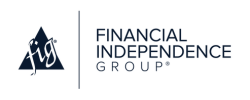Updated March 13, 2025, at 11:49 AM
“Shirtsleeves to shirtsleeves in three generations.”
Wait. What?
If you’re contemplating what that could mean, let me save you the inevitable Google search.
It’s an old proverb that describes future generations’ inability to manage and maintain the wealth passed down from previous generations. Another way to look at it, as the matter-of-fact Scottish proverb goes, is this: “The father buys, the son builds, the grandchild sells, and his son begs.”
This saying represents an unfortunately common cycle. One generation builds the wealth, the next use it, and by the third generation, well, it can all but disappear. Leaving the fourth generation with nothing but stories of their family’s past wealth.
For clients, laying the foundation for multi-generational planning is an essential task to pass their wealth down to future generations. But, it can be a challenge to get everyone thinking about multi-generational planning.
With that in mind, here are some talking points to share with clients to get them thinking about their legacy, along with tips and an exercise they can use right away.
Encourage Them to Break Down Generational Barriers
The first step towards achieving a multi-generational wealth planning strategy is to get everyone on board with a single plan. But with such a broad range of opinions prevalent in most families, getting everyone to align when discussing family goals and intentions can be challenging.
This challenge gets its roots in generational differences. However, communication can be the key to unlocking a well-thought-out plan. Open communication allows each generation to provide their perspectives to ensure all issues and concerns are evaluated to protect the family’s wealth.
It’s imperative to start here with clients. Multi-generational wealth planning doesn’t happen overnight. But by sharing these different perspectives with clients, you can help them better understand the generational differences. In turn, this can help break down barriers that inhibit a proper multi-generational wealth plan.
First Generation
Presumably, senior family members helped build their family’s wealth through hard work and frugality. Sacrifices were made to get the family’s financial situation to where it’s at today. Help the senior members think about their own needs first so they can maintain the quality of life they’ve worked hard to build.
From there, you can suggest that they decide how much wealth they want to pass on to their heirs. Once your clients look to be set up comfortably and have an idea of how much heirs will receive, then you can help them move to the next step of laying the foundation of family values and rules to start molding a healthy multi-generational wealth plan.
Second Generation
Assuming your client is a senior family member, their children likely have seen first-hand the blood, sweat, and tears that were required to amass the wealth their parents created. With that in mind, this second generation is generally appreciative of their parents’ sacrifices and want to use their inheritance to build a life of balance and purpose. That’s a net positive in planning for generational wealth.
Now middle-aged, perhaps with children of their own, your client’s offspring are often unsure how much wealth their parents actually have. And because open communication is essential in multi-generational planning, inspire your clients to engage the second generation in discussions so both generations understand the level of their family’s wealth. This can get the ball rolling for generations to work together to preserve and utilize their family’s wealth.
Third Generation
This generation is where the headaches can potentially start. If your clients are wary of their grandchildren preserving their generational wealth, it doesn’t hurt to remind them that empathy and understanding can go a long way in multi-generational wealth planning.
The youngest generation is the least experienced when it comes to financial planning. They’re generally teens or young adults who are still figuring out their path in life. And because they’re furthest removed from the wealth creators, this generation can sometimes be careless with their family’s money if given the opportunity.
However, their inexperience shouldn’t deter them from having a voice in the planning conversation, but they may not need to know every detail at this point in their lives. Urge your clients to help the youngest generation get educated in financial management by using exercises like college funding or basic budgeting. These can be important steps towards including them in multi-generational planning talks.
Related: Planting Seeds for the Future: Cultivating Client Estate Plans with Care
Suggest a Formal Communication Plan with Family Charters
Creating a formal and open communication plan is critical for clients to build an effective multi-generational plan, and a great way to accomplish that can be through a family charter.
A family charter is a document that describes the values, vision, mission, roles, and responsibilities of family members. It also contains sections on the charter’s purpose, how it’ll change throughout the generations, and which members have decision-making capabilities. Lastly, a family charter should detail members’ accountability, participation, and most importantly, transparency.
The lack of clarity in multi-generational planning is a primary source of distrust among family members, and that can obviously lead to major consequences and conflict. When you’re talking multi-generational wealth planning, suggest to clients that they and their family members create a charter. It can be an invaluable aspect of a multi-generational wealth plan.
Client Family Meeting Tips
Once your client’s family has an established charter, their next step should be setting regular family meetings to start realizing their plan (hopefully, with your help).
Here are five tips to share with your clients to make the most out of their family meetings:
- Urge clients to set a vision and purpose. Having a direction on how their family achieves financial goals will set the table for a defined family culture in planning meetings.
- Have them create structure. Set-in-stone accountability allows for growth in individuals and families as a whole. Help clients have a plan in place that describes who does what and when.
- Suggest a facilitator. We won’t pretend that all family meetings will go smoothly each time. But a competent facilitator will have the coaching, communication, and coping strategies needed to help level the playing field. Don’t be shy to suggest getting a facilitator to help your clients manage their meetings to ensure every voice is heard.
- Recommend that they open up. Your clients (and their family members) need to be completely honest and transparent. Vulnerability and engagement initiate better conversations and can deliver much-needed buy-in from all family members. Urge clients to be 100% honest in these meetings.
- Encourage them to include fun! Let’s be honest: financial talk isn’t always the most exhilarating, especially for people outside of the industry. To help energize their meetings for a more unified experience, advise clients to balance their meetings with fun activities and financial education opportunities.
Keep Reading: Building Long-Lasting Client Bonds: 6 Estate Planning Strategies for Financial Professionals
A Useful Exercise for Family Meetings
Often in multi-generational wealth family meetings, there tends to be a focus on the hard-hitting mechanics of multi-generational planning, such as tax-efficient strategies, wills, and trusts. And that’s all fine and dandy.
But suppose a client and their family members can learn to look past those tangible aspects of planning and become genuinely involved in the overall well-being of future generations. When that’s the case, a family’s wealth can take a giant leap toward long-term sustainability.
A great way to develop this framework is by encouraging clients to explore the “dimensions of wealth” in an exercise during one of their meetings. These dimensions are both financial and non-financial in nature and can help clarify the values, ideas, and traits your family wants to pass along to future generations.
Consider passing along these five dimensions of wealth for your clients to discuss in their next wealth planning meeting:
1. Financial: It’s the obvious one. Talking about financial wealth and implementing the best strategies to transfer assets is critical for multi-generational wealth planning. Your clients can learn more about their family dynamics (relationships, asset preferences, personalities, and more) to start accounting for potential roadblocks that may occur when transferring wealth in the future. Knowing these hurdles can come in handy when they’re discussing goals and strategies with you.
2. Human: Human wealth is the skills, identity, and character of family members. The traits that run in a given family can influence how they (or you as the financial professional) approach their wealth. In fact, clients should definitely account for a family member’s “human wealth” before making them a beneficiary. They should be ready both psychologically and intellectually to manage any inheritance.
3. Family: Family wealth refers to the communication and interactions within a family tree. Since many financial failures are rooted in a lack of communication, this wealth dimension is crucial. Make sure clients give all family members a forum or platform to connect and improve communication—regardless if the interactions are financial-based or not.
4. Structural: This family wealth type relies on wealth management tools like estate plans, family charters, trusts, and more. It’s not uncommon for a family to have various incentive clauses or other structural facets in a multi-generational plan, but those can be ambiguous. It’s important to make sure clients have simple and organized wealth management tools in place. Doing this can help relieve any possible resentment between heirs down the road.
5. Societal: What does their family value? Do they have a vision of how life should be? How are they tapped into the community and world around them? These are all questions clients should ask family members to find their family’s societal wealth.
Parting Words
Creating and implementing a multi-generational plan is no easy task for you or your clients. It takes a lot of hard work, long hours, family cooperation, and expertise to see a plan come to fruition. However, the satisfaction that comes from knowing you’ve helped a family be financially stable for generations to come is the priceless reward for seeing the planning process through.
Although these tips and ideas are just the starting block, if you share them with clients interested in multi-generational wealth planning, you might just help a ton of people devise a more holistic and effective approach to generational wealth.



